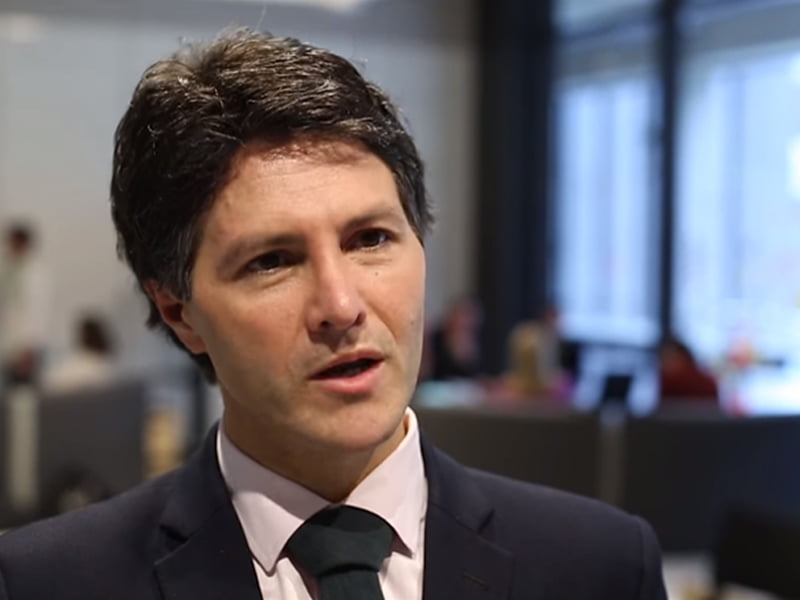New South Wales Finance Minister Victor Dominello has thrown his weight behind the Federal government’s looming digital identity plans, including the use of state driver’s licence photos to verify ID.
Mr Dominello said a harmonised national digital identity was a key to dramatically improved online services across not only the public sector, but services delivered online by the private sector as well.
Although Prime Minister Malcolm Turnbull had framed discussion about plans to give the Commonwealth access to state driver’s licence photographs as a National Security debate, Mr Dominello said it was completely unremarkable that driver’s licence photos also be used in verification for digital ID.

He said that while privacy remained the key issue in any digital ID conversation, the discussion about identity in the era of internet and smartphones had moved well beyond the bruising Australia Card debate of 30 years ago.
“We need to have this debate at the national level and the Feds need to drive it, but they need to make sure it’s framed with privacy as the two bookends,” Mr Dominello told InnovationAus.com.
“If privacy is central, then you start instilling trust – and with trust you can have a sensible debate,” he said.
“We had the Australia Card debate 30-odd years ago and that didn’t fair too well. But 30 years ago we didn’t have mobile phones and 30 years ago we didn’t have the internet … it feels like more than a millennia.”
A key difference in discussions about digital ID is that in the smartphone era is that there are direct and substantial potential benefits to citizens. The benefits do not just flow to government.
Mr Dominello has been one of the primary political drivers behind the New South Wales government’s own digital transformation efforts over the past five years, making it the stand-out leader among governments in Australia on digital issues.
Although he has previously warned that the lack of action on digital identity at the national level would stymie digital transformation efforts across all layers of government – and he has welcomed the strides made toward introducing a public beta of the project.
Angus Taylor and the Digital Transformation Agency this week released detail for public consumption about how its Govpass digital identity will work. You can read about it on the DTA website here.
Mt Taylor said governments had a primary role in sorting out digital identity issues for no other reason that governments held more IDs than any other organisation.
“Banks have lots, telcos have lots, energy utilities have lots, but we [in government] have the most,” Mr Taylor said. “And so we have absolutely prime responsibility to improve the way all of this works.”
Mr Taylor told a conference in Sydney this week that he estimates he had about 100 different digital identities across the internet, including about 20 with the federal government across different service delivery agencies.
“The fact that I have 100 is an abomination as far as I’m concerned … We simply have too many of these things,” he said.
The Govpass digital identity is expected to be launched as a private beta on October 20 and is expected to be opened as an opt-in system for all citizens next year.
Mr Taylor said the Govpass imperative was that it be user-driven and consent-driven. “If I want to keep 100 identities … [then] I should be able to,” he said.
Secondly, it had been designed with privacy and security imperatives at its core, specifically avoiding the problems associated with data honeypots, or even the existence of a single card, which could also lead to identity fraud problems.
“We don’t want a single big database, we don’t want a card, we don’t want a single number that’s stamped on your forehead,” Mr Taylor said.
“We must absolutely ensure that … data is protected if we are to ensure not only that we minimise the risk of identity fraud, but we also minimise the impact, in the unlikely event that it does happen,” he said.
“These are really crucial design principles that I have been adamant about.”
The Trusted Identity Framework opens the door to enable third-parties to provide identity services to access Commonwealth services – including state governments and private sector companies.
“It does have implications for services that are being provided across government and in time across the public and private sector as well,” Mr Taylor said.
“We are partnering with Australia Post and others and increasingly we will expand that net of third party service providers, identity service providers, who we think can play a role,” he said.
“The most crucial thing for us is that we’ve got to set standards that industry adopts. We don’t need to be the service provider for all of these things, the standards are the crucial piece.”
Meanwhile, Victor Dominello says a national digital ID framework will vastly improve security across the digital economy, reducing garden variety cybercrimes like fraud and theft.
“When I speak to the cyber security experts, including the NSW government’s own Chief Information and Security Officer Maria Milosavljevic, they all say that the best way to protect ourselves in relation to cybercrime is to harmonise identity,” Mr Dominello said.
“The fact that we have myriad identities out there and people are able to create false identities makes it that much harder for enforcement agencies to find crooks, identity them and bring them to account,” he said.
“If we can start to get a better framework about a national identity for each of our citizens and those that reside in this great country, then we will go a long way to shoring up our defences.”
Do you know more? Contact James Riley via Email.

